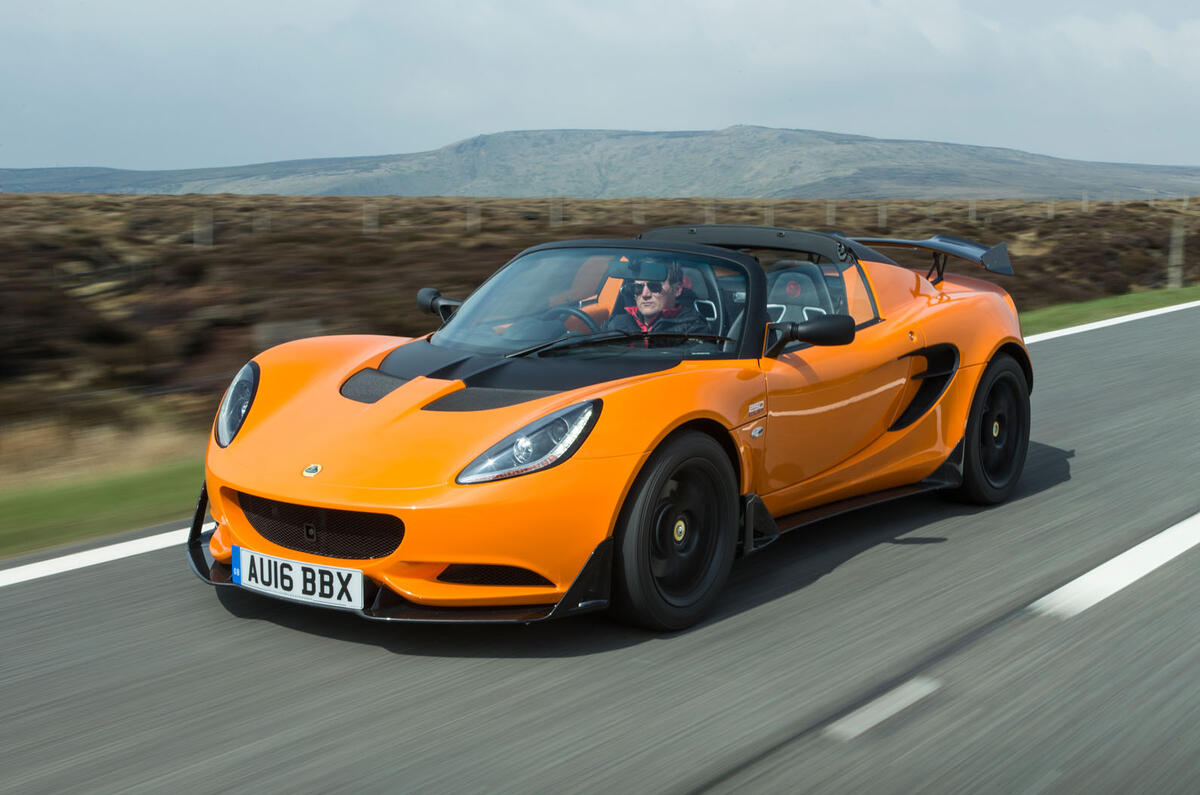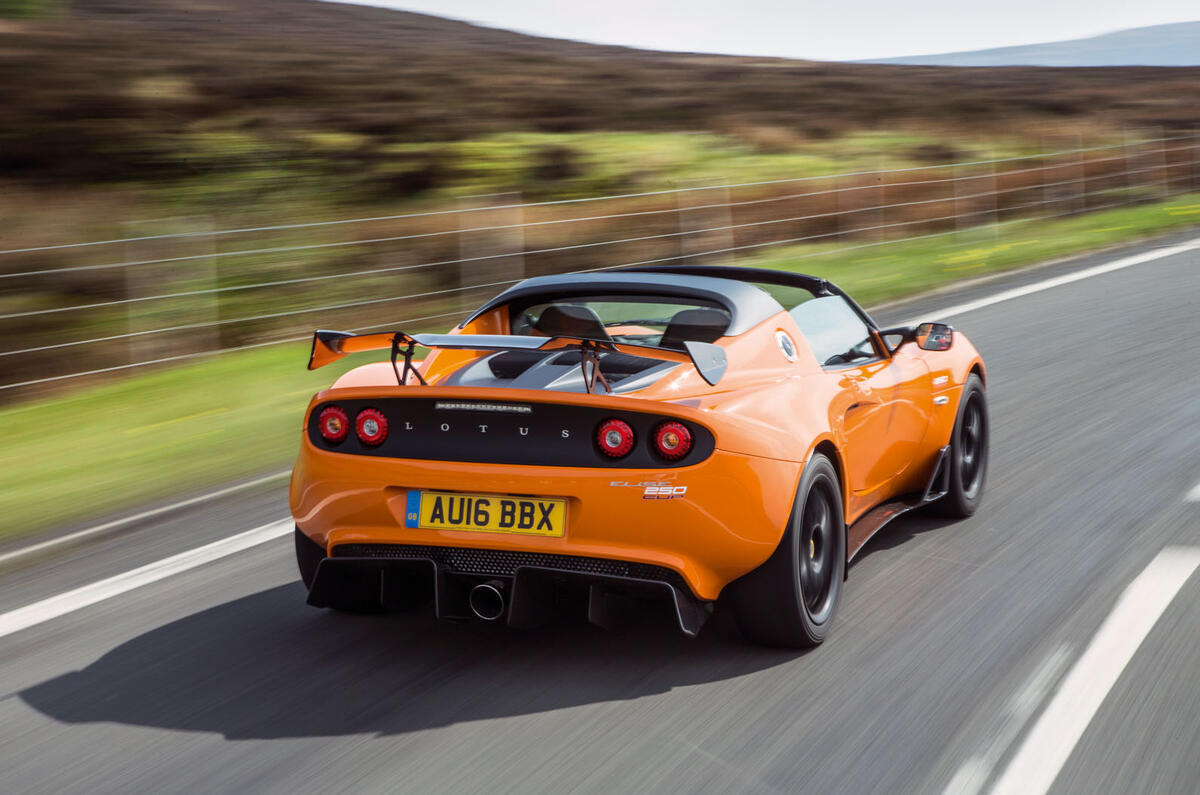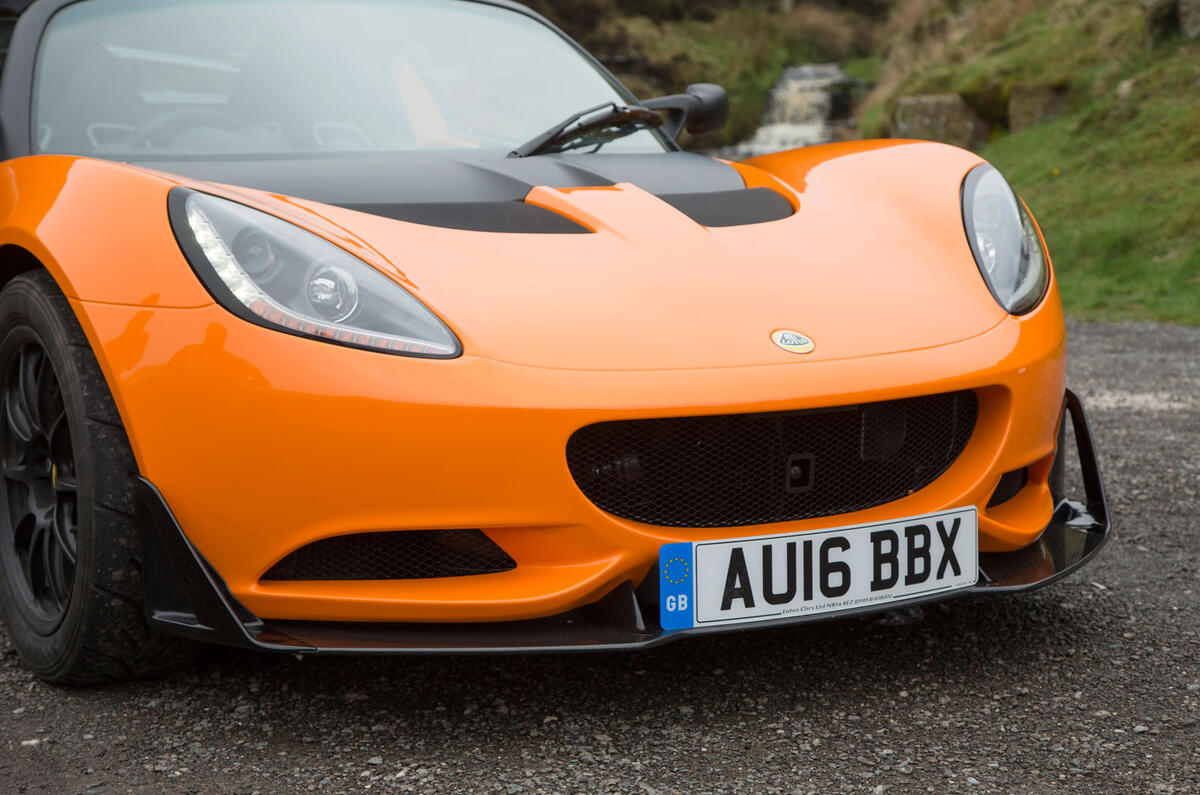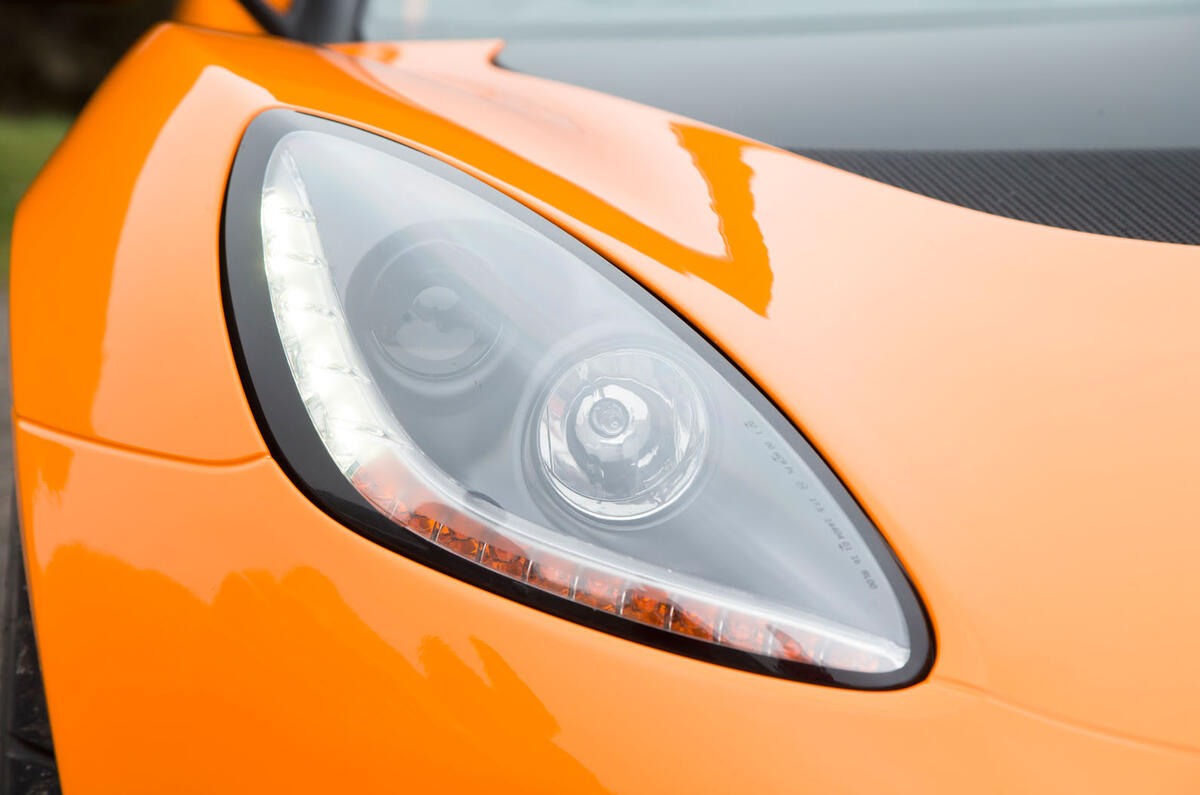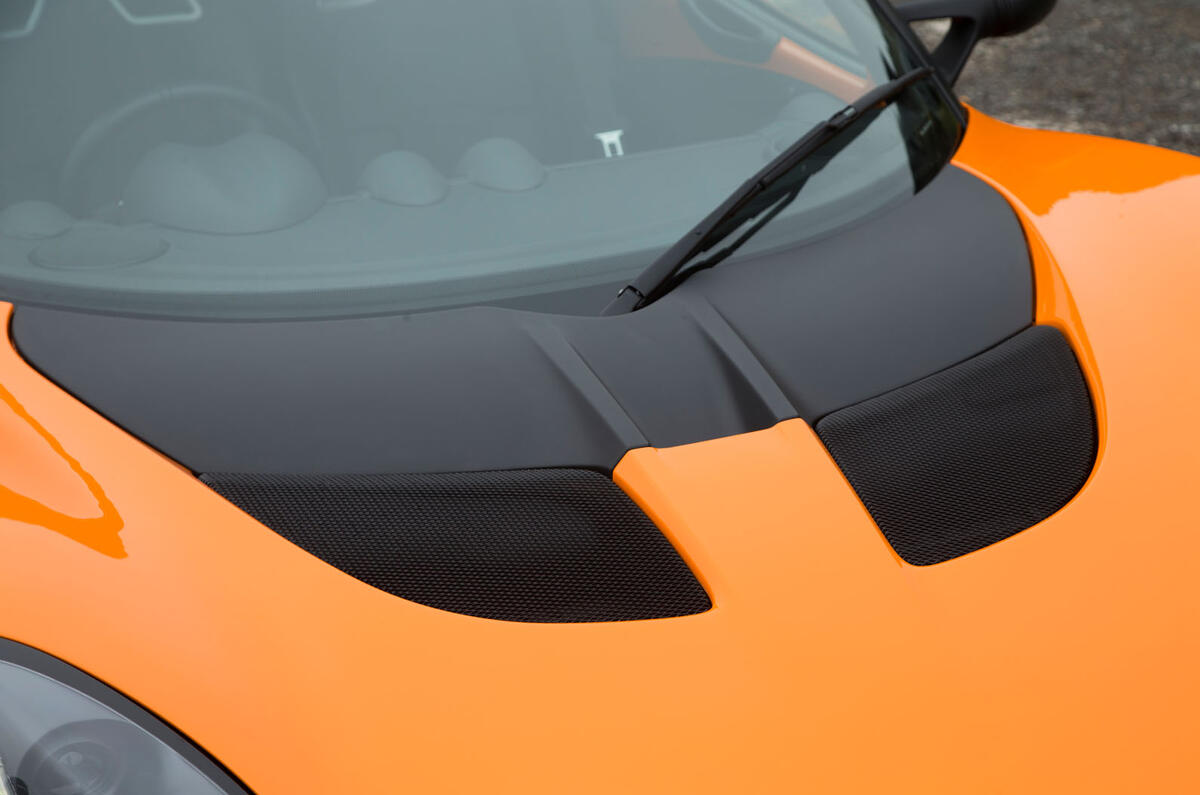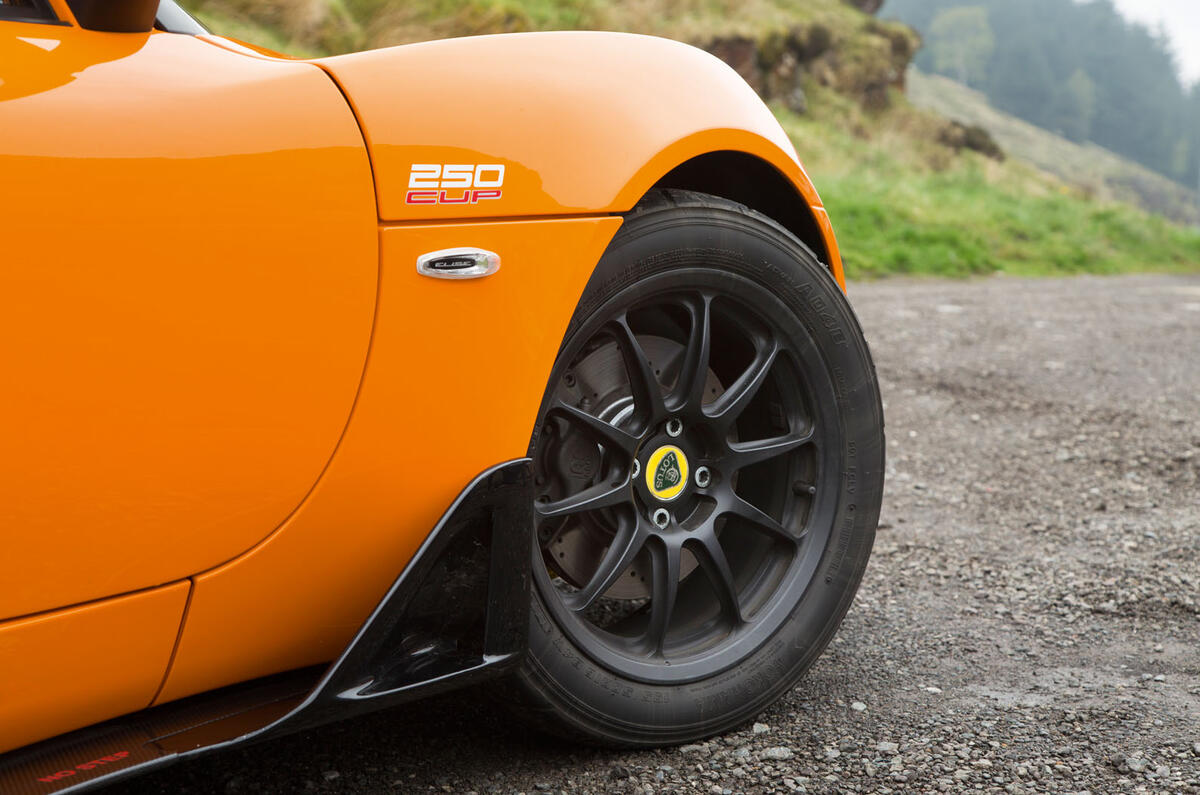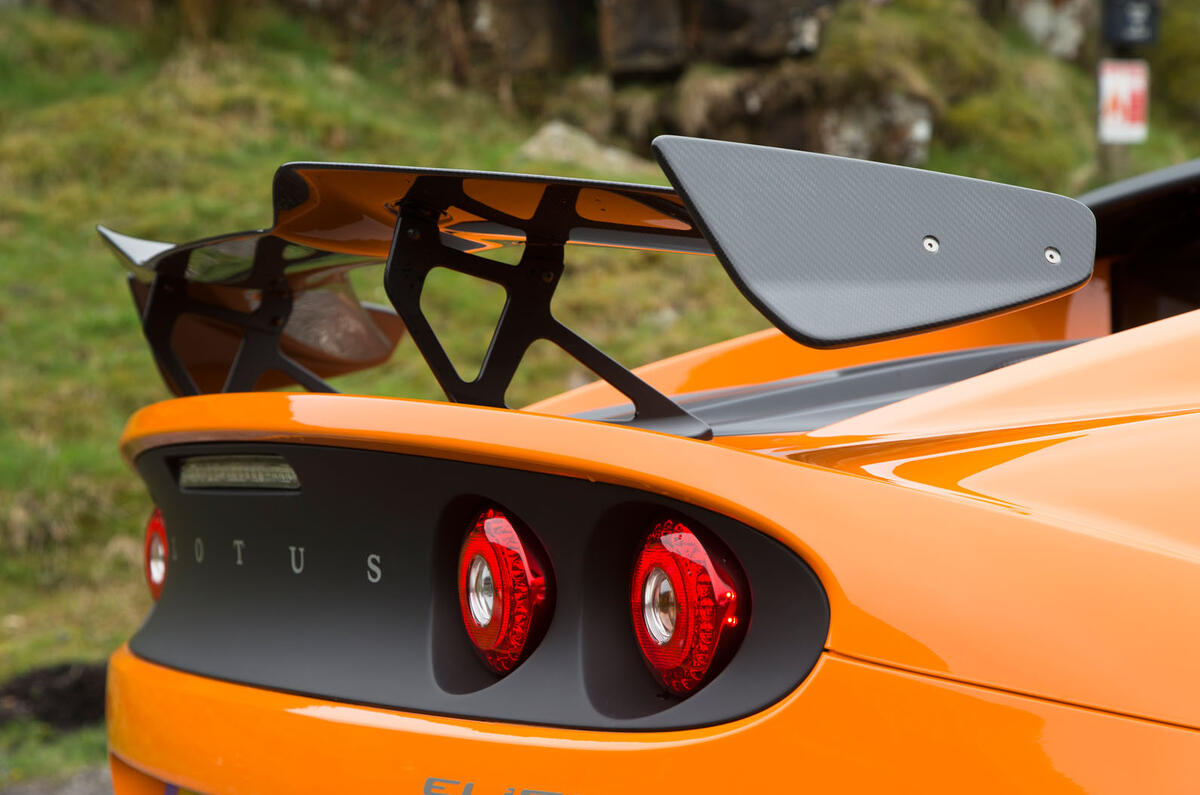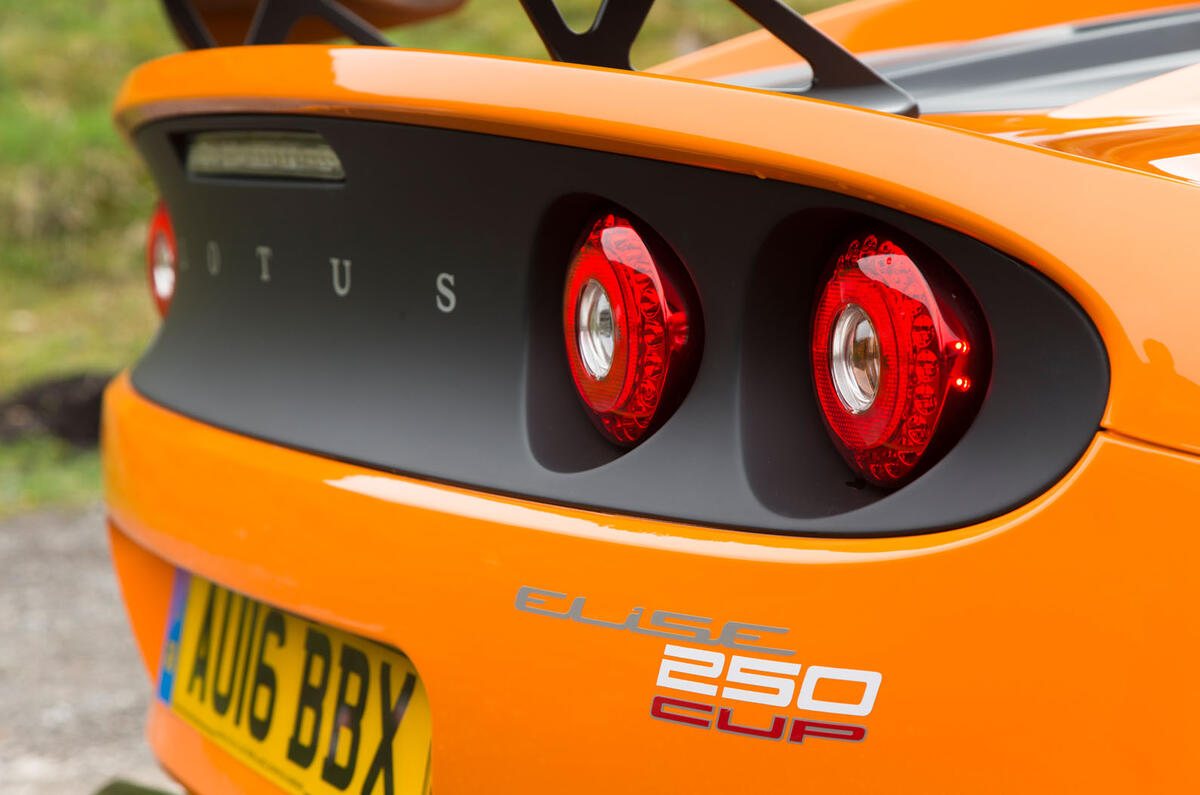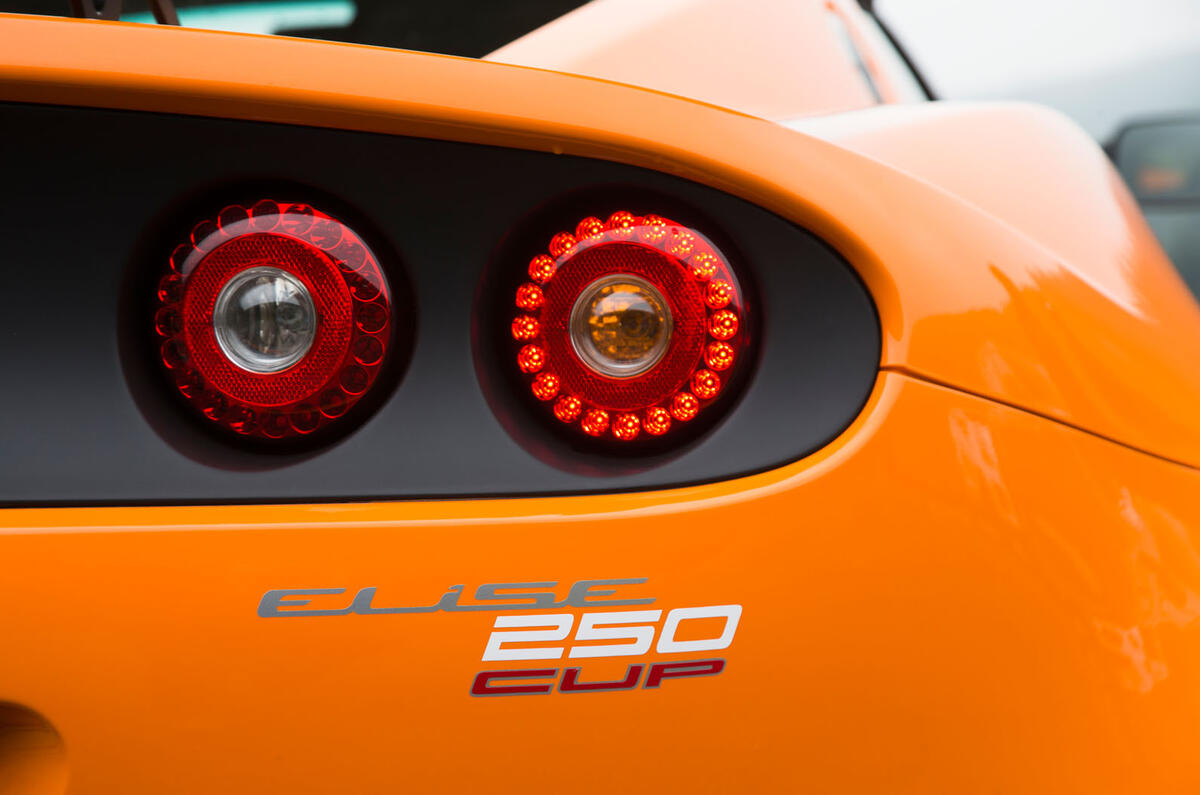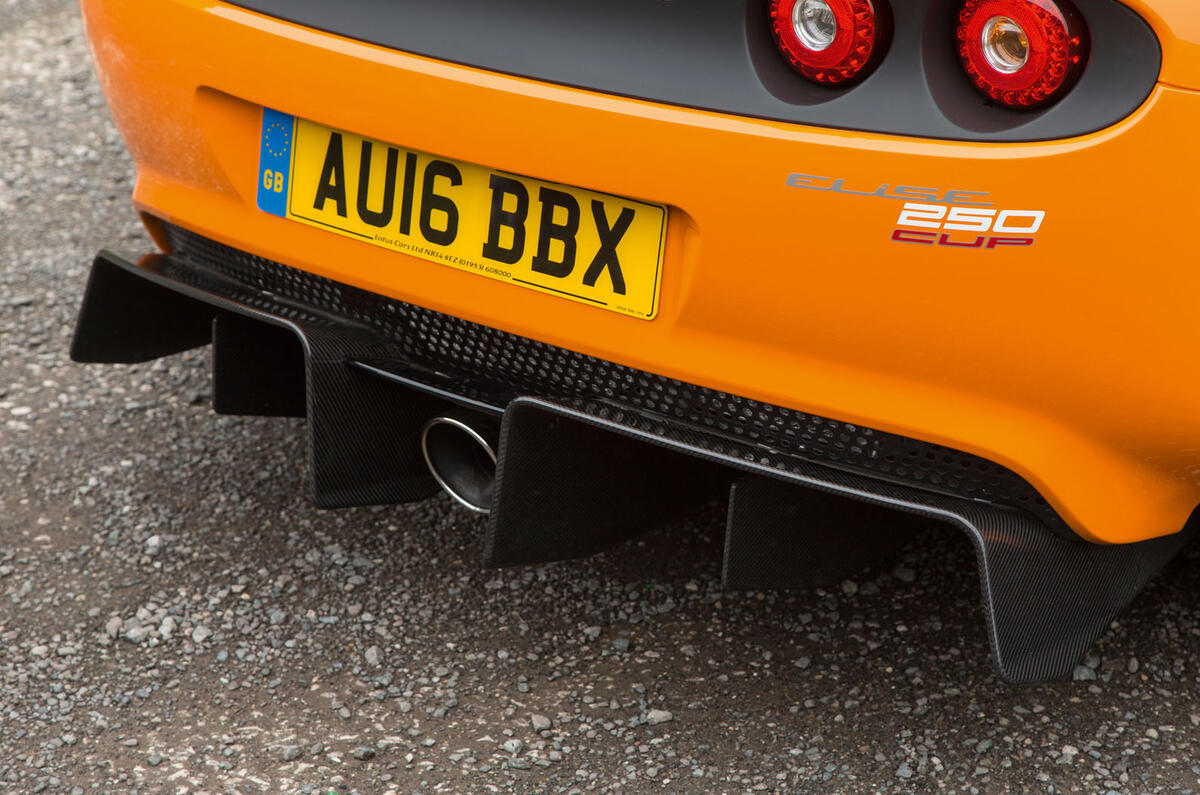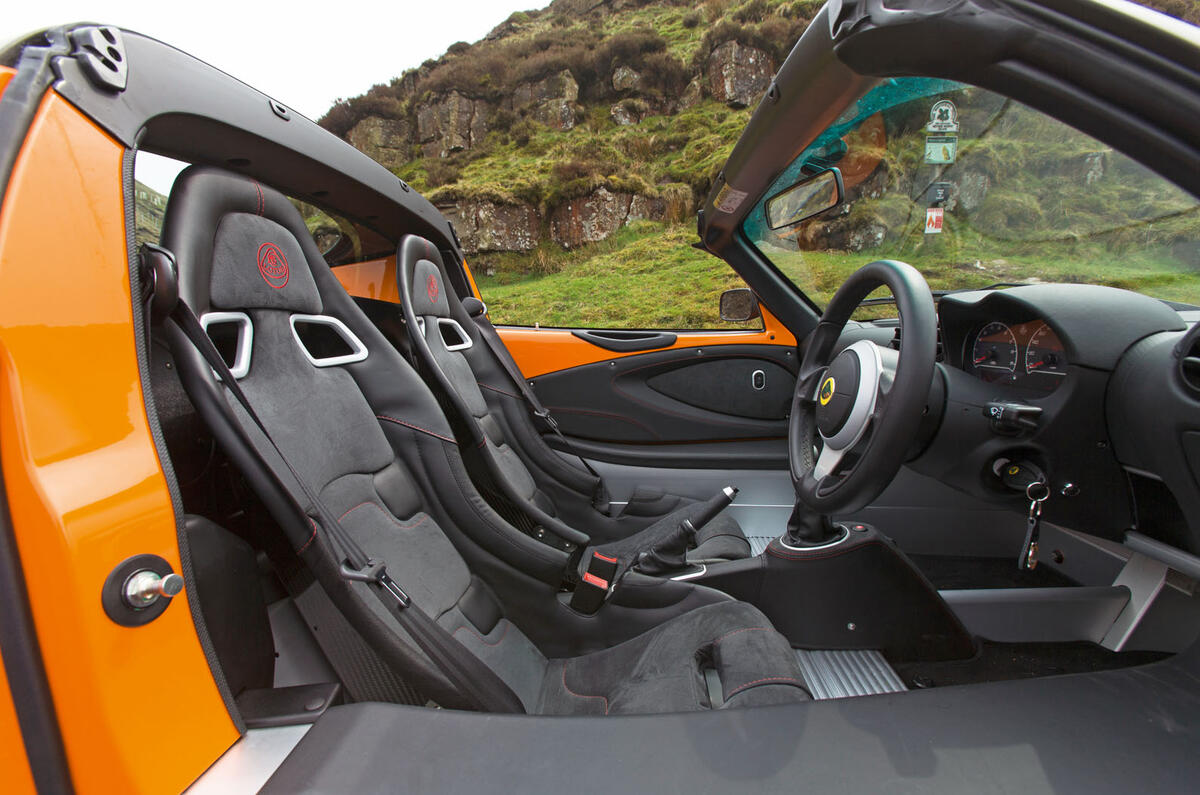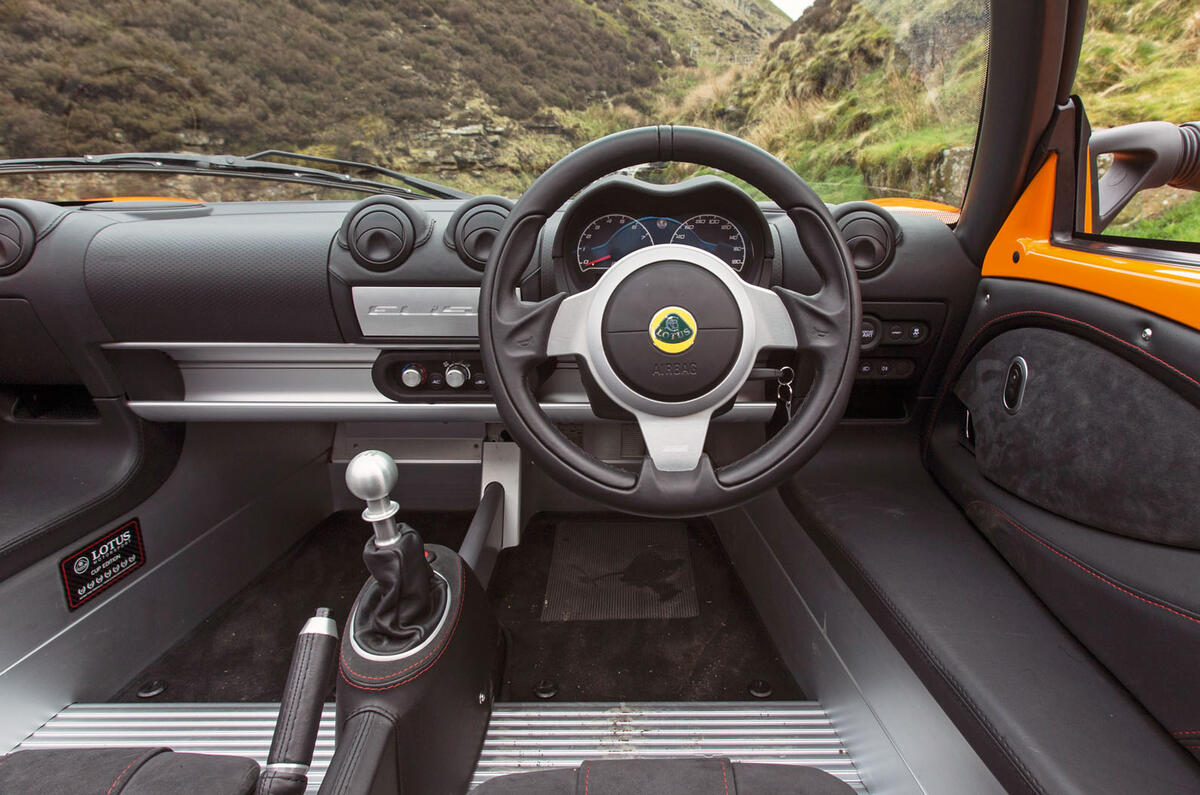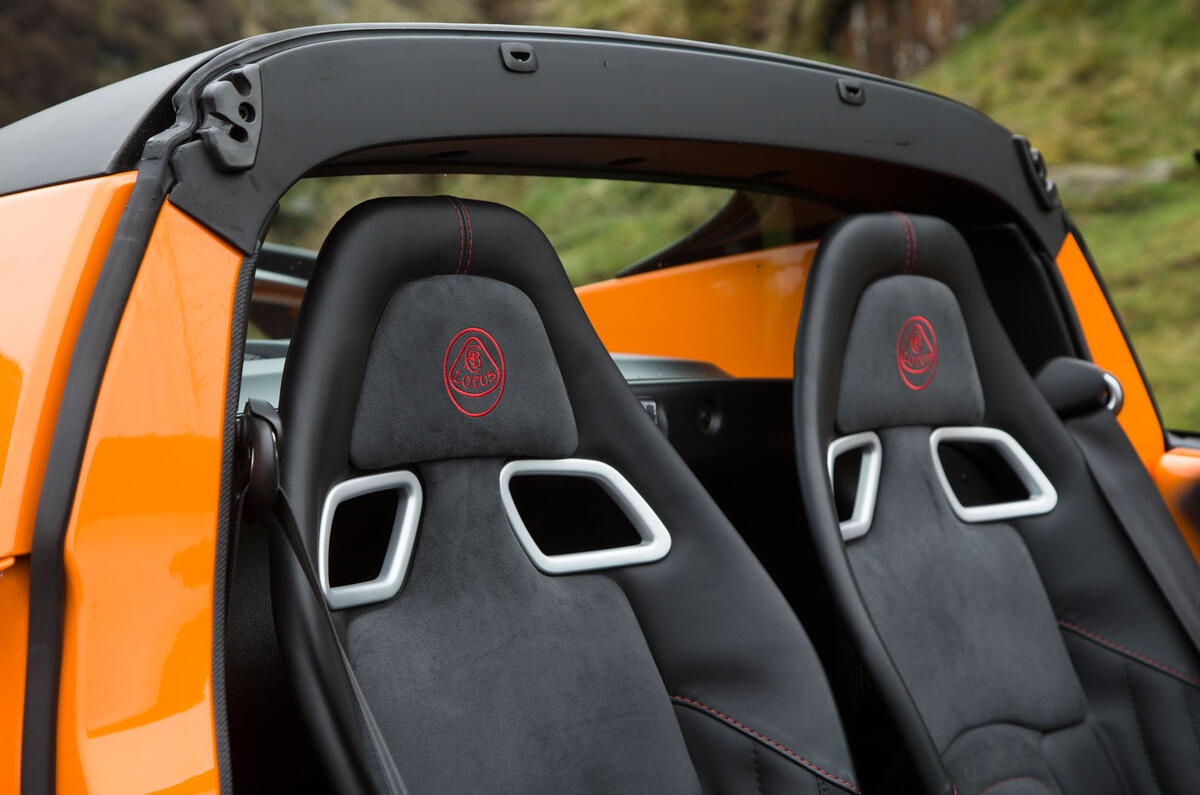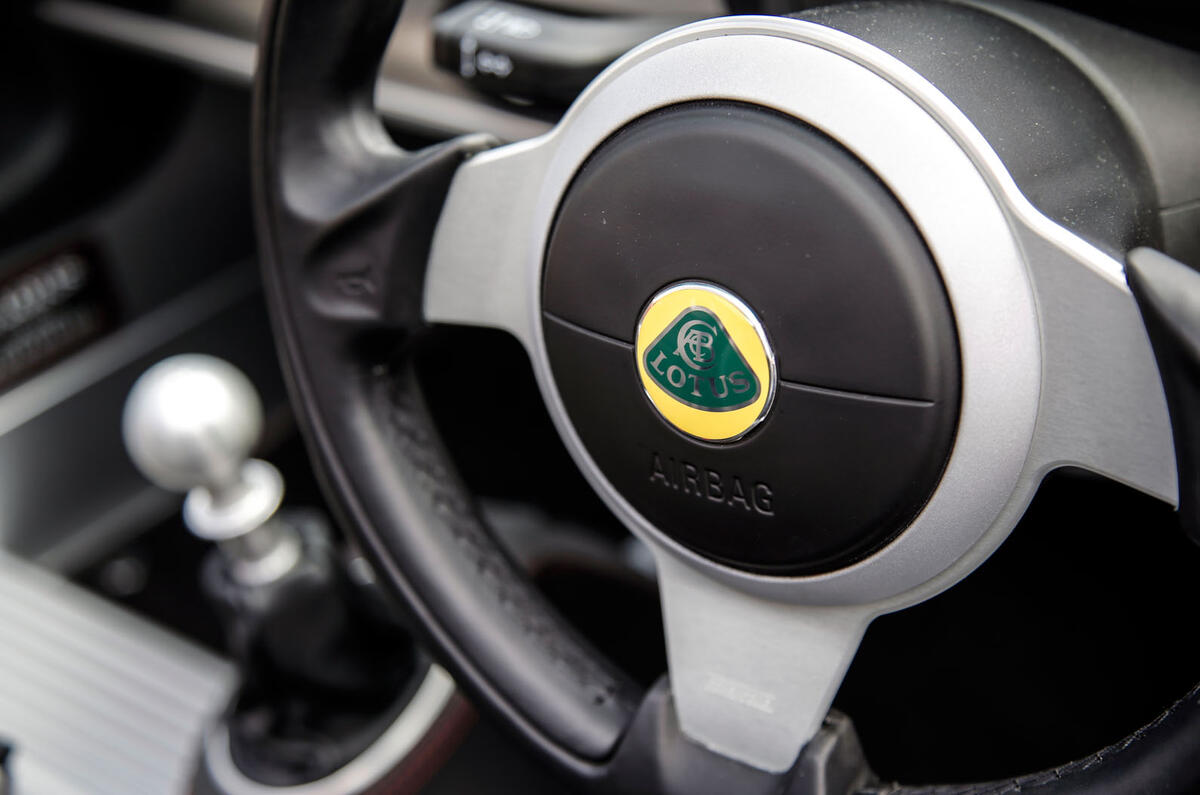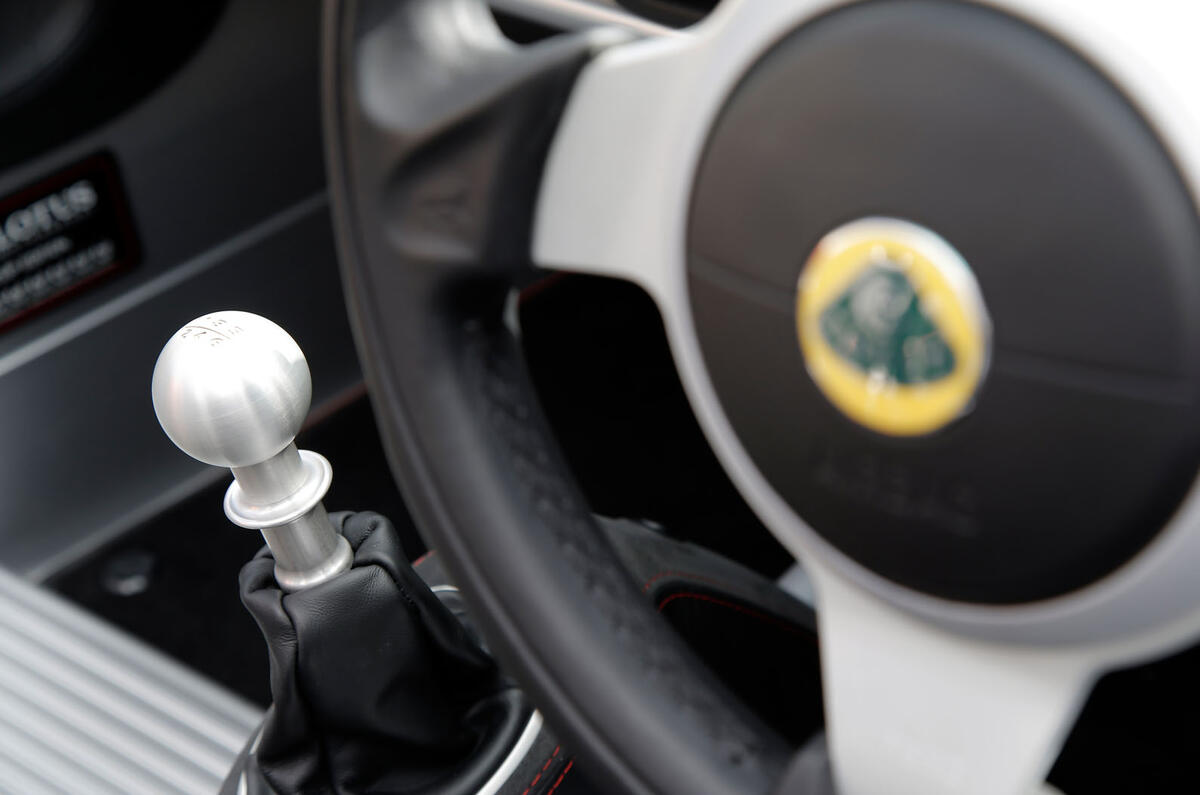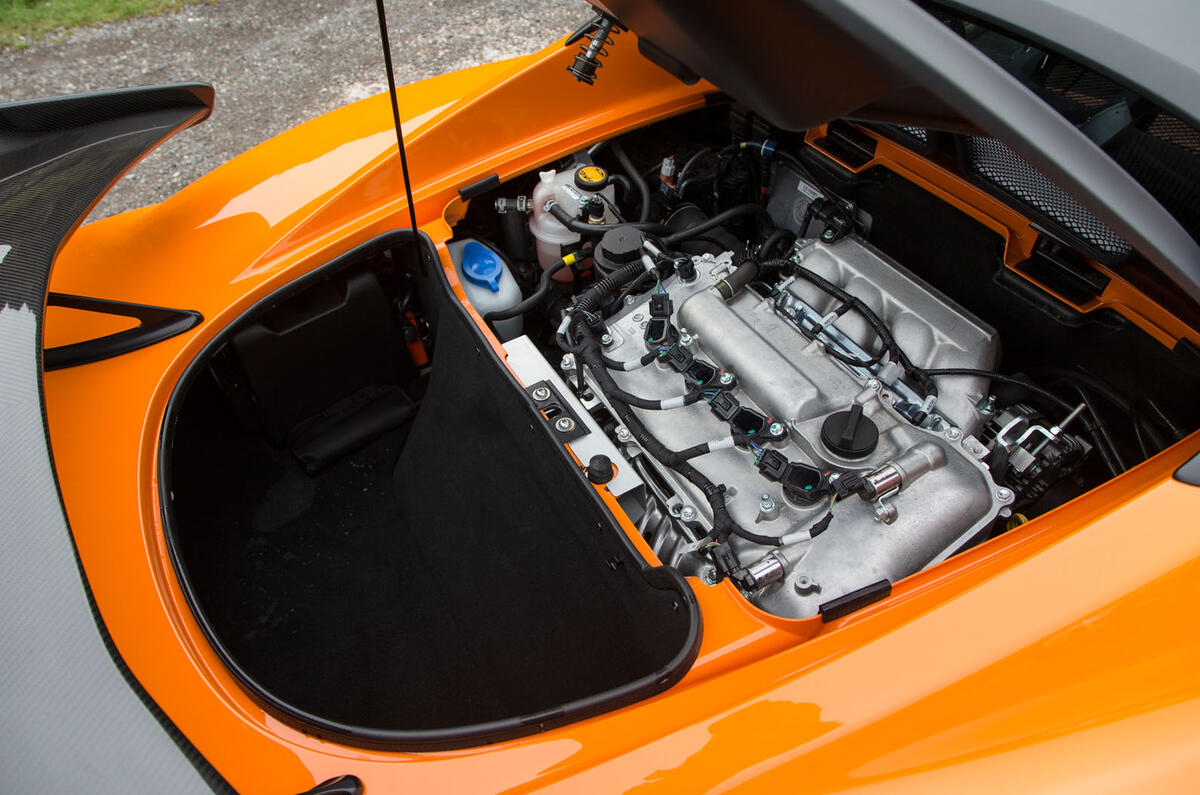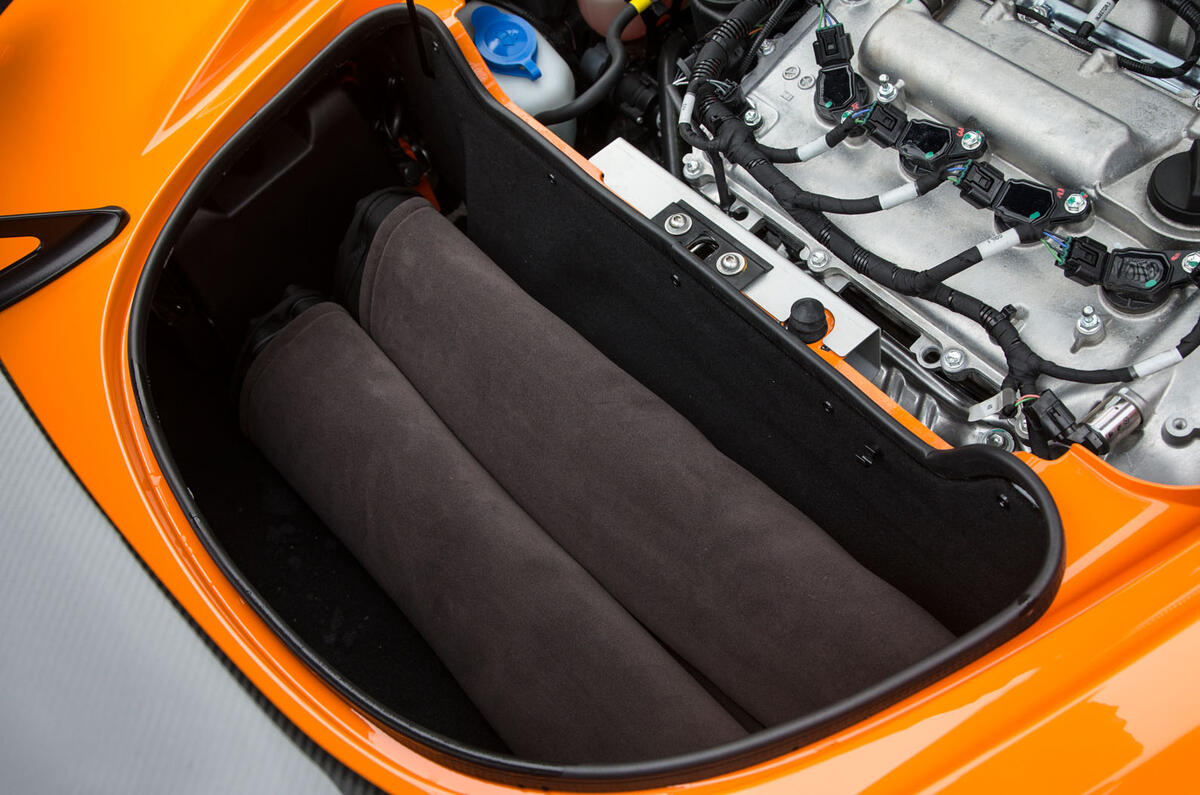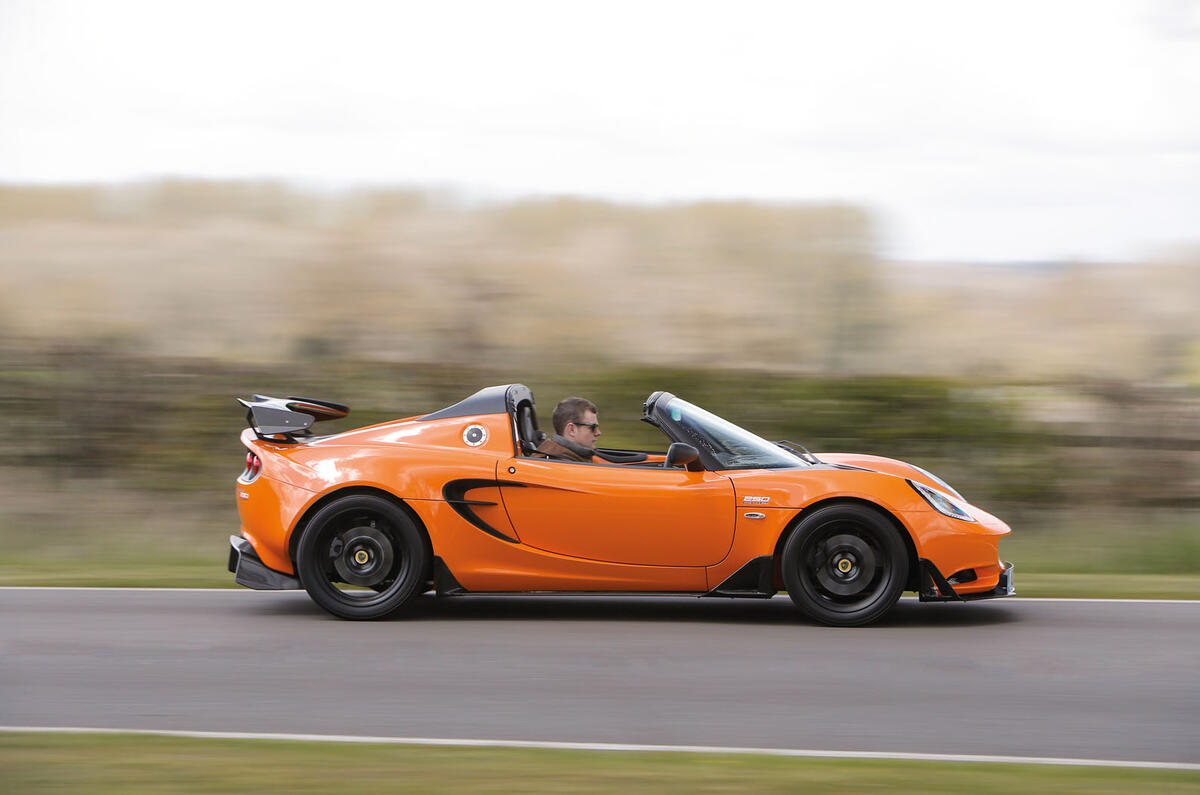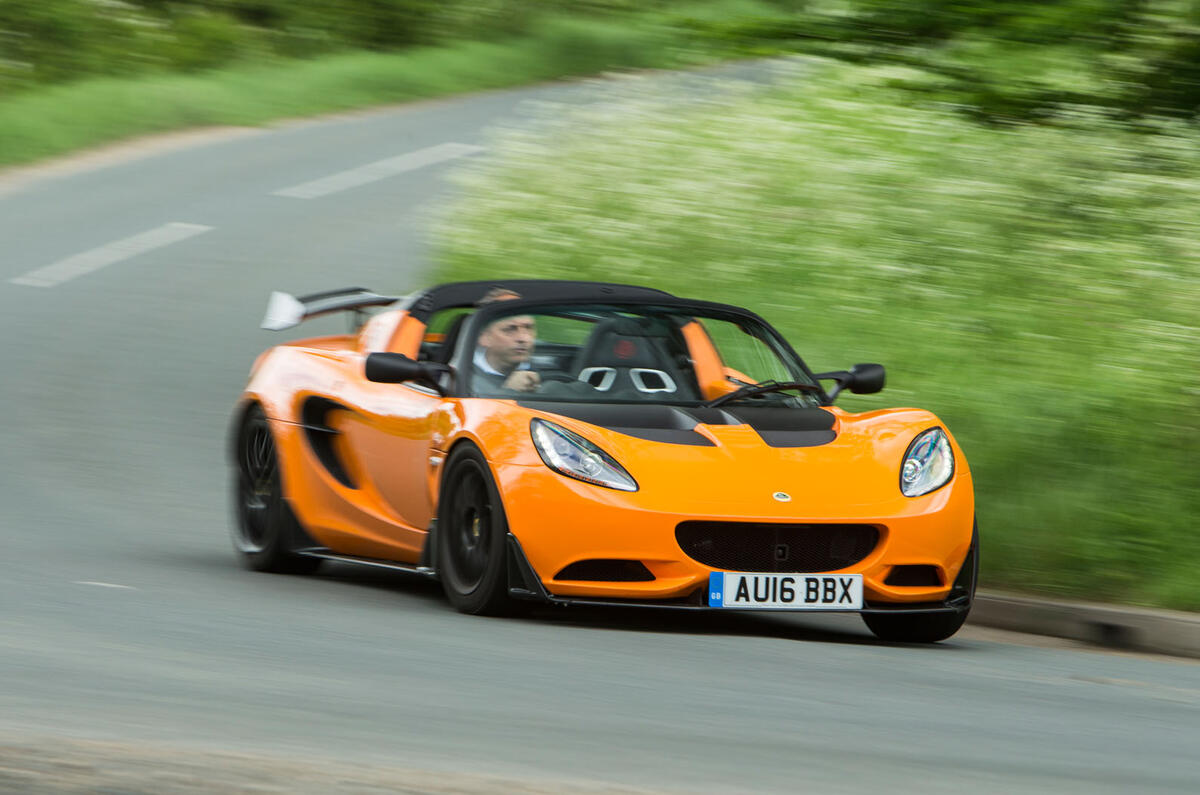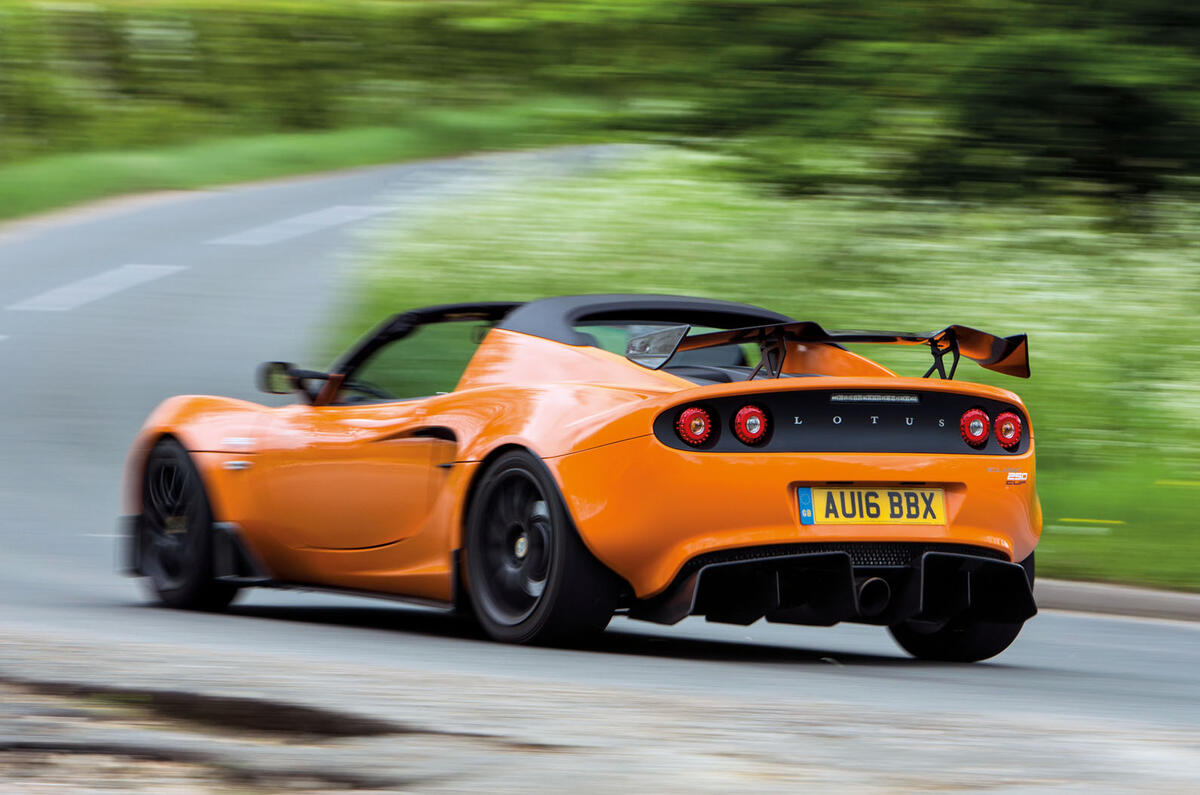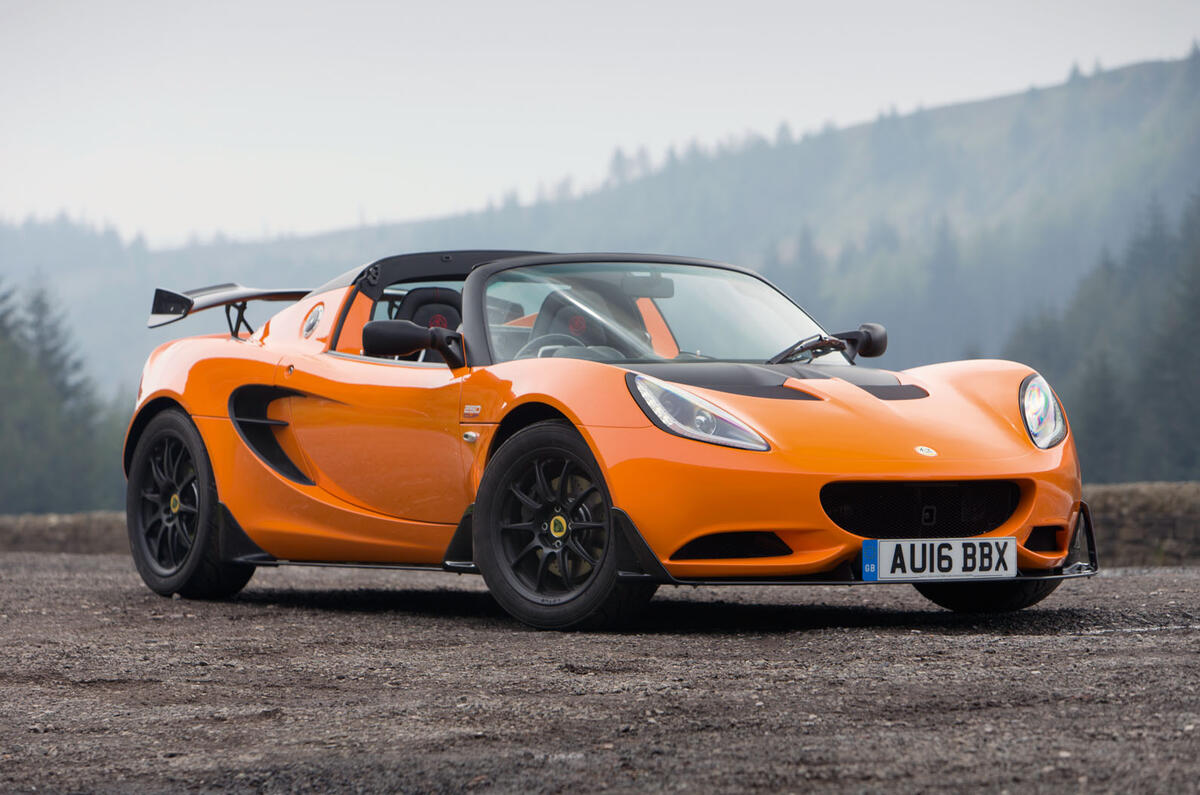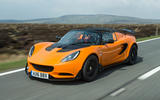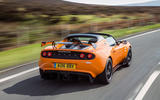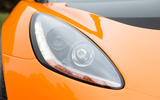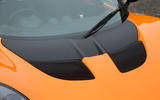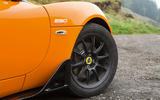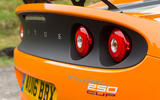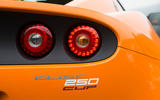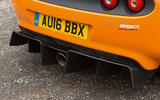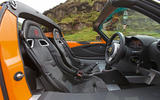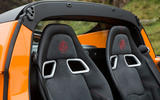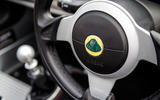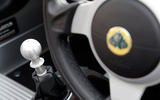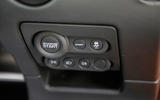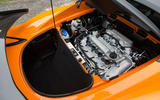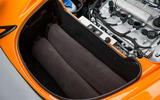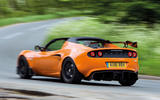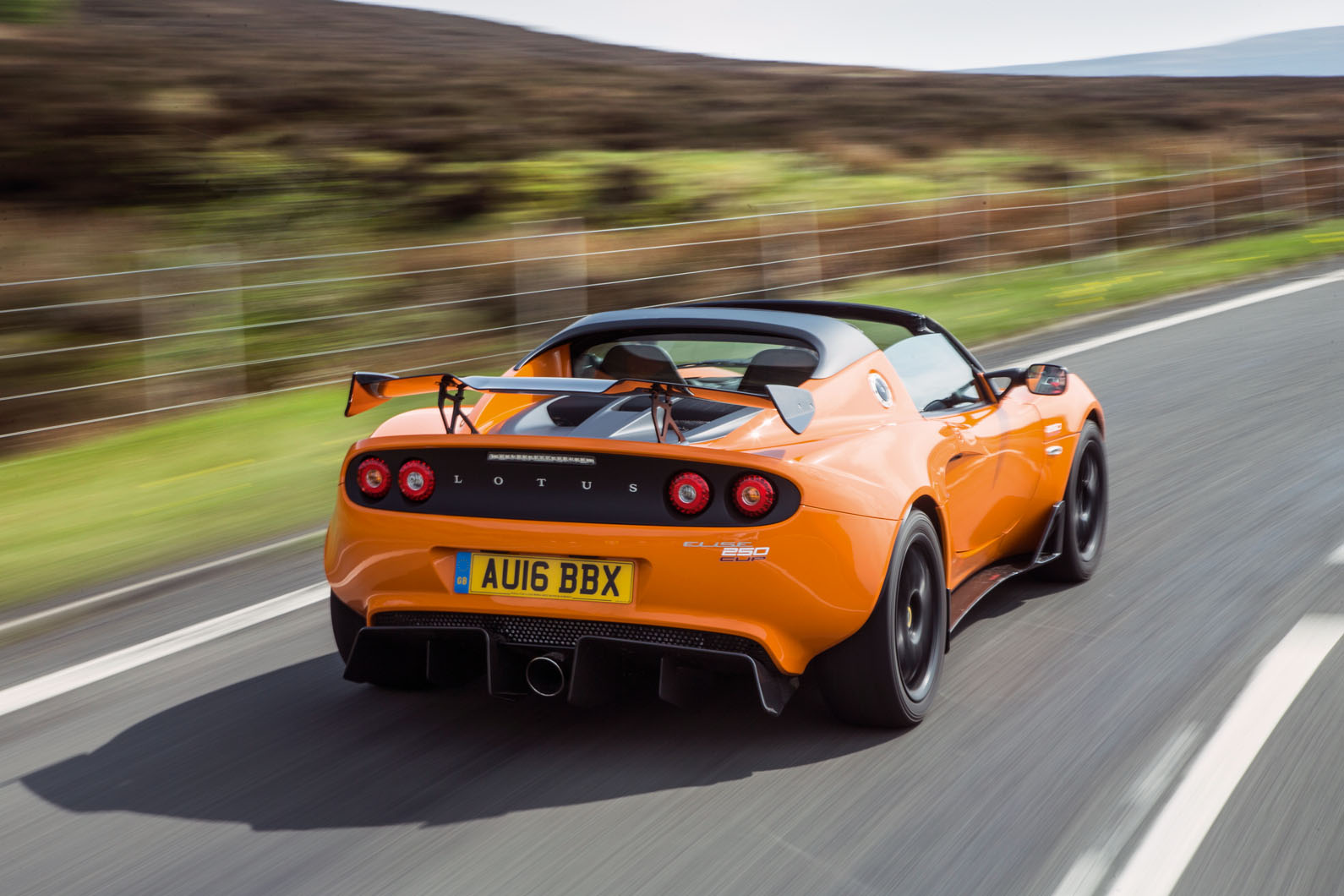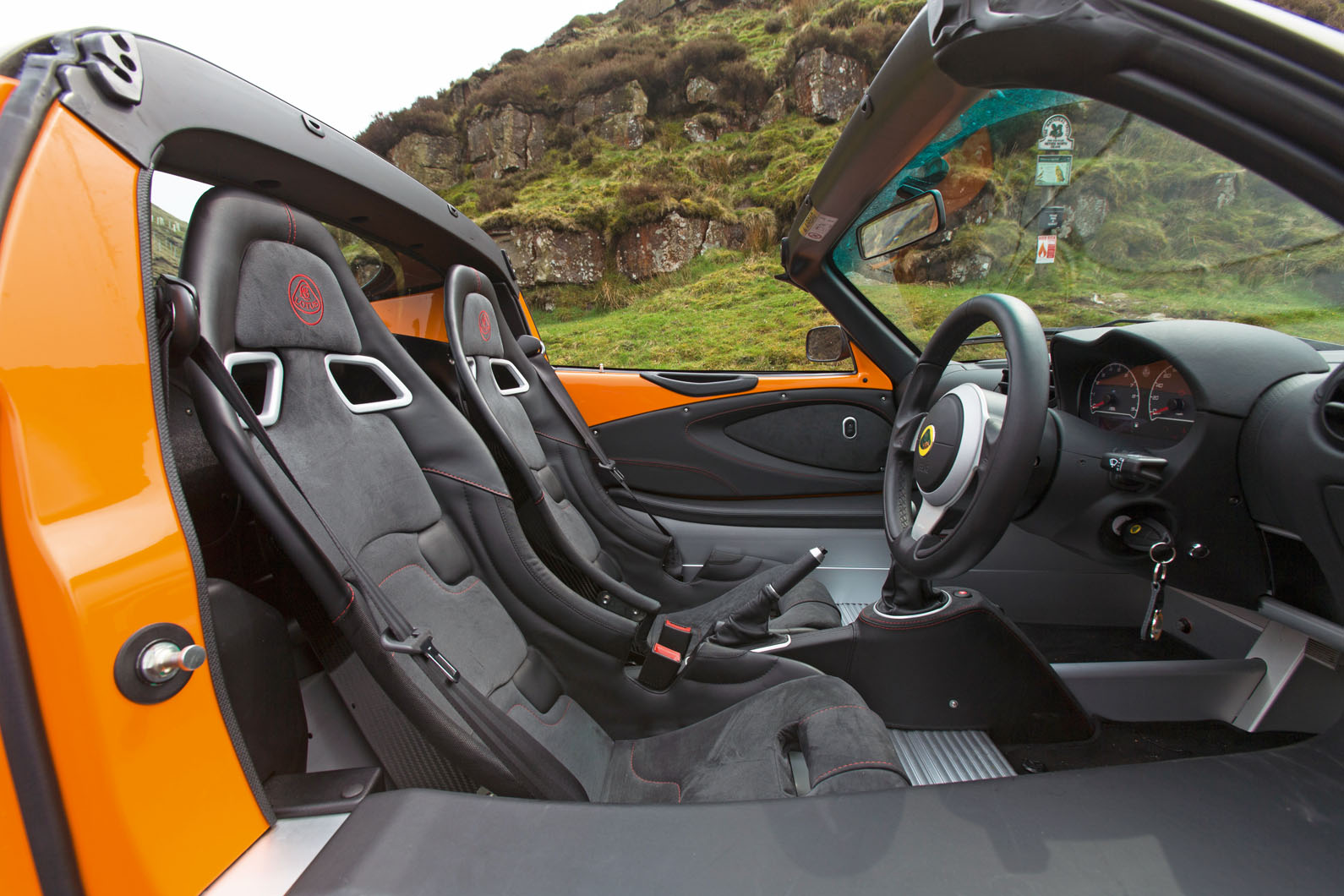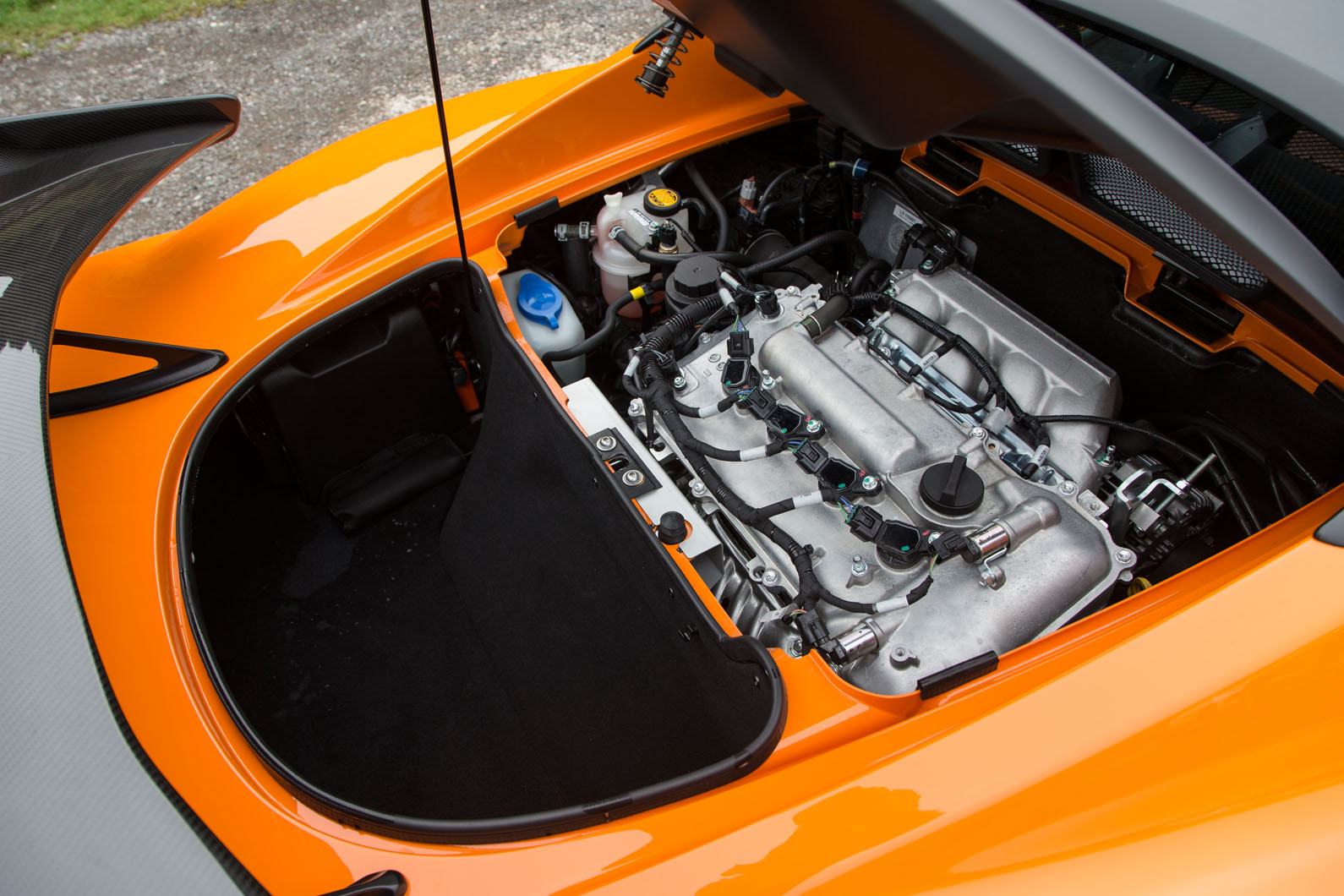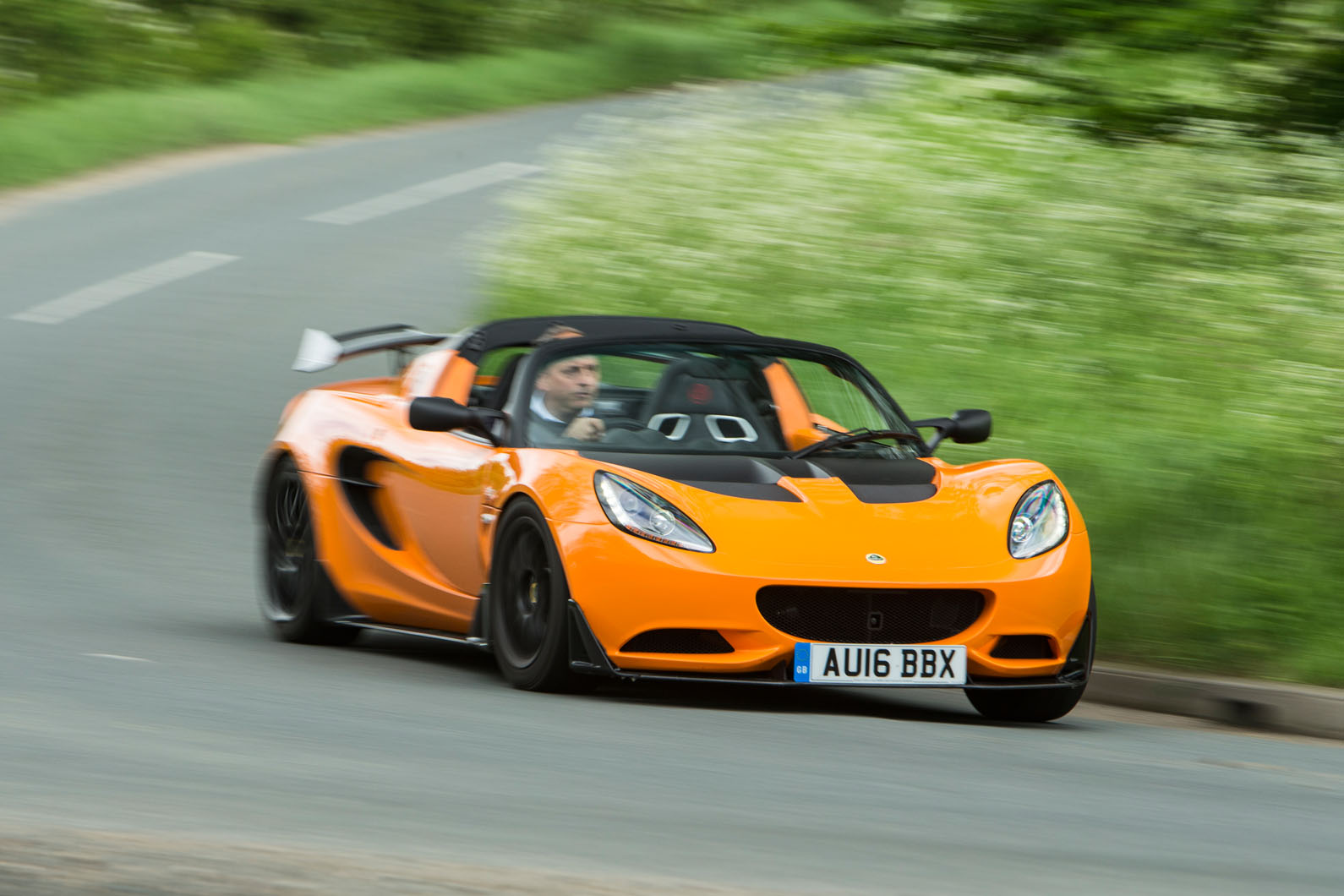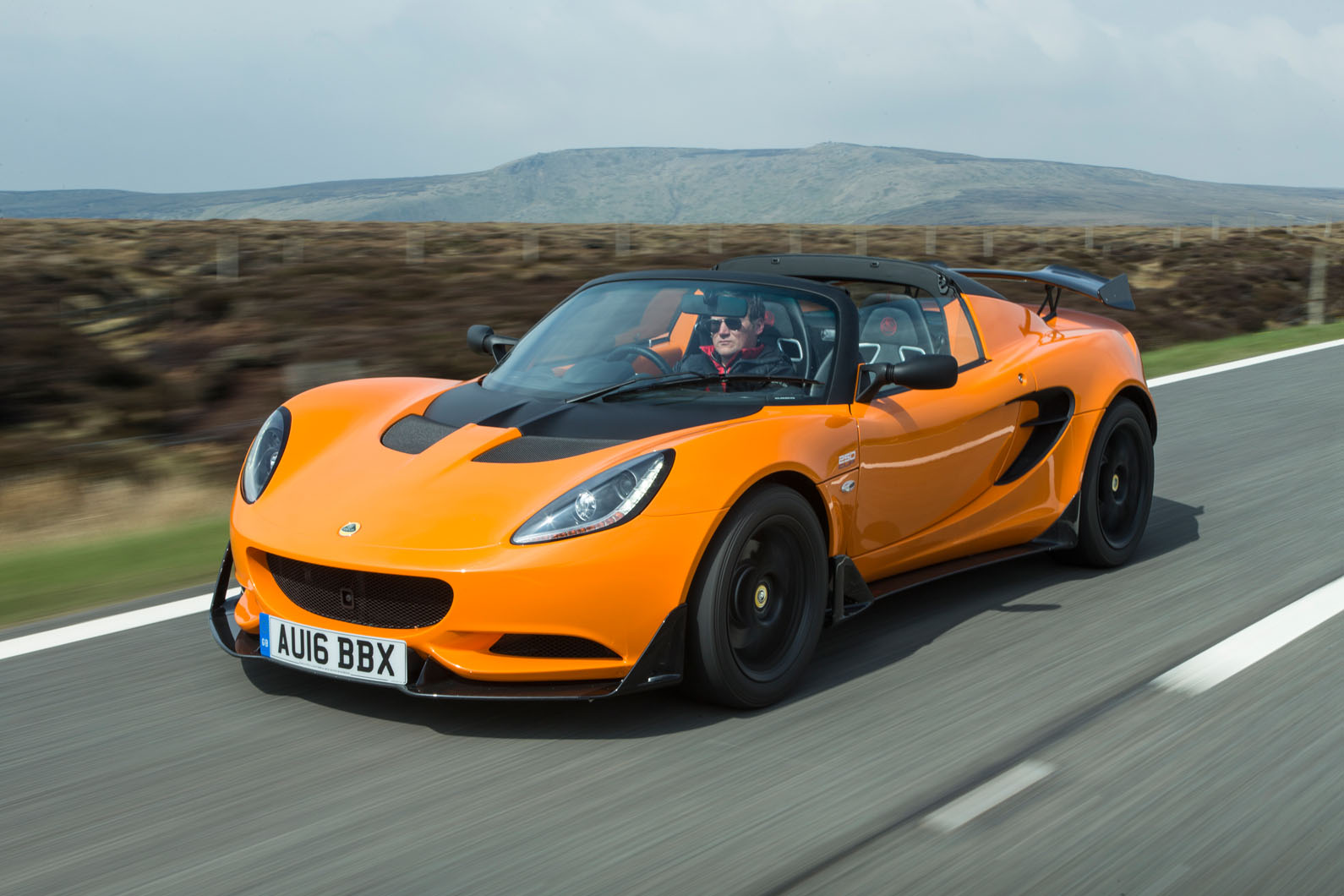If the Cup’s exterior shows the marginal gain of a little expenditure, the Lotus Elise’s cabin has long reminded buyers that Lotus’s purse strings are drawn tighter than a hangman’s noose.
Bare bones, the interior is unchanged. So the sills are huge, the plastics questionable, the creaks inevitable and the build quality still not what you’d expect of a £45k car.
Its likeable elements are consistent, too: the exposed, wilfully spartan tub, the low-slung seating position, the tiny steering wheel, the sensation that nothing is extraneous.
But after 20 years, the charm has worn thinner than ever. There’s still nowhere convenient to put anything (although an optional cupholder is coming) nor any real pleasure to be drawn from sitting in the car other than the visceral experience of going quickly.
The 250 does come with several advantages. First among them are the carbonfibre-backed seats, which are both an eyeful and adequately comfortable for buckets designed to keep you from spilling out into the neighbouring footwell.
The Alcantara trim, too, although underused – it’s on the pews and door cards – is predictably pleasant.
Less nice is the fabric roof’s continued capacity for stubbornness – whether taking it off or putting it on again – and its willingness to allow both water and excessive noise to leak into the cabin.
The jettisoning of the hard-top is understandable (the Elise is generally a more enjoyable thing when it’s open to the sky), but you do tend to miss the more permanent roof when faced with a sopping wet motorway.
Also rejected from the flagship model’s kit list is the stereo. That isn’t a colossal loss from the spec sheet for anyone au fait with Lotus’s soul-sapping faculty for picking up static like a Chinese radio satellite – but the fitment of something Bluetooth-furnished (as the optional ‘infotainment’ is reputed to be) would at least soften the Elise’s unflinching 20th century aura.
While the Cup 250 doesn’t come with a stereo and our test car wasn’t equipped with the optional infotainment, our Evora long-term test car has revealed what is possible once Lotus eventually accepts that a fully functioning multimedia system is an essential part of most buyers’ requirements for a motor car.
Its Alpine system is not perfect by any stretch of the imagination, but it covers the basics well enough and lifts the perception of cabin-based friendliness by about eight rungs.
The Elise deserves to be cut a little slack, though. After all, rival companies such as Caterham and Ariel don’t concern themselves with Bluetooth or speaker placement.
However, if Lotus wants its roadster to flaunt a much higher degree of usability than the standard track day selection — and it does — then it’s necessary for the brand to take note of the seriousness with which Porsche regards all things touchscreen.
And if that bar seems set unfairly high, Lotus needs to seriously reconsider the sticker price that puts the Elise Cup 250 in direct competition with the all-new Porsche 718 Cayman.


